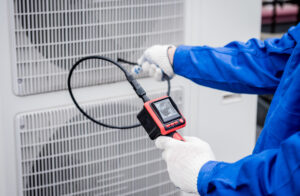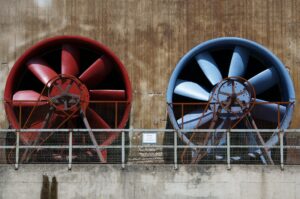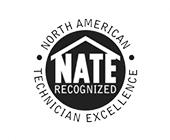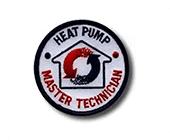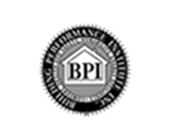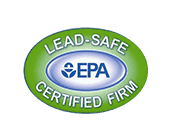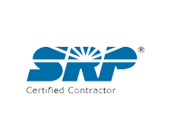Maintaining the heating system in your home is essential to ensure safe and efficient usage. Proper maintenance helps to prevent costly repairs, extend the life of your heating equipment, and improve the overall performance of the system.
In line with this, one of the most important parts of the heating system that should always be well-maintained is the heat exchanger.
In an HVAC system, a heat exchanger is used to transfer heat between the air inside a building and the outdoor air. There are several types of heat exchangers that can be used in an HVAC system, including air-to-air heat exchangers, air-to-water heat exchangers, and water-to-water heat exchangers.
Regardless of the type of heat exchanger used, the basic principle is the same: heat is transferred from one medium to another, allowing the HVAC system to efficiently heat or cool the building.
If the heat exchanger is damaged or not functioning properly, it can pose significant dangers and cause problems with the heating system. In this article, we will discuss how to know if your heat exchanger is cracked, the risks associated with it, confirmation techniques, and what to do if it is cracked.
Signs of damage to heat exchanger
1. Decrease in heating efficiency
One sign that your heat exchanger may be cracked is a decrease in heating efficiency. If your furnace is not able to heat your home as effectively as it used to, it could be a sign of a crack in the heat exchanger. This can allow heat to escape rather than being transferred to the air, causing the furnace to work harder and leading to decreased heating efficiency.
2. Increased power consumption
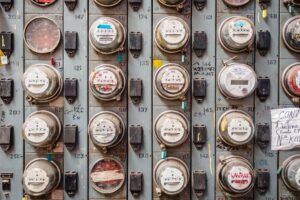
A rise in the monthly energy costs is another clue that there may be something wrong with the heat exchanger. It’s possible that your heating system is not running as effectively as it should be if all of a sudden your energy expenses are much higher than usual.
The furnace may have to work harder to make up for the heat that is being lost if the heat exchanger is damaged, which may lead to increased energy consumption and higher expenditures.
3. Strange smells
Strange smells or odors in your home can also be a sign of a cracked heat exchanger. If you notice a musty or burning smell coming from your furnace, it could be a sign of an issue with the heat exchanger. A crack in a heat exchanger can allow carbon monoxide to leak into your home, which can have a musty or burning smell.
It is important to be aware of any strange smells coming from your furnace and to address the issue as soon as possible to prevent potential hazards.
4. Visible damage
In some cases, a crack in the heat exchanger may be visible to the naked eye. If you notice any cracks or visible damage to the heat exchanger, it is important to address the issue as soon as possible. A furnace heat exchanger crack can allow heat to escape and can also pose a risk for carbon monoxide leaks and fire hazards.
Risks associated with heat exchanger damage
1. CO leaks
A damaged heat exchanger may put your family at risk in a number of different ways. The possibility of carbon monoxide leakage is one of the most significant dangers that might occur.
Carbon monoxide is an invisible and odorless gas that, if ingested in certain quantities, can be fatal. If there is a crack in your heat exchanger, it’s possible that carbon monoxide might seep into your house. If this happens, you and your family could be at risk for carbon monoxide poisoning.
2. Fire risk
In addition to the risk of carbon monoxide leaks, a cracked heat exchanger can also pose a fire hazard. If the heat exchanger is not functioning properly, it can cause the furnace to overheat, increasing the risk of a fire.
3. Health issues
The health risks associated with a cracked heat exchanger are not limited to carbon monoxide poisoning and fire hazards. If the heat exchanger is not functioning properly, it can cause the furnace to blow cold air into your home, which can lead to respiratory problems and other health issues.
How to detect a crack in a heat exchanger?
If you suspect that your heat exchanger may be cracked, there are several methods you can use to test for the issue.
1. Visual inspection
One way is to visually inspect the heat exchanger for cracks or damage. This can be done by accessing the heat exchanger and looking for any visible cracks or damage.
2. Pressure testing
Another method for testing for a cracked heat exchanger is pressure testing. This involves attaching a pressure gauge to the furnace and observing the pressure readings to see if there are any changes in pressure that could indicate a crack in the heat exchanger.
3. Infrared camera
An infrared camera can also be used to detect a crack in the heat exchanger. The camera can pick up temperature changes that may indicate a crack in the heat exchanger.
What to do when your heat exchanger is cracked?
1. Ventilate the area
If you have determined that your heat exchanger is cracked, it is important to take action as soon as possible. The first step is to turn off the heating system and ventilate the area. This will help to reduce the risk of carbon monoxide poisoning or other hazards.
2. Contact a professional
Next, it is important to contact a professional for repair or replacement of the heat exchanger. Attempting to repair or replace the heat exchanger on your own can be dangerous and could lead to further damage to the furnace.
A trained professional, such as Autumn Air, will have the knowledge and expertise to properly diagnose and address the issue.
A heat exchanger failure can be a serious problem, and it is important to have it repaired or replaced as soon as possible to prevent further problems with the heating system.
How to protect yourself from a cracked heat exchanger?
1. Install a CO detector
In addition to repairing or replacing the heat exchanger, it is also a good idea to consider installing a carbon monoxide detector in your home. This will alert you if there are any dangerous levels of carbon monoxide present, allowing you to take action to protect your family.
2. Perform regular maintenance for smooth operation
The most effective course of action is one that eliminates the potential for heat exchanger problems. In order to avoid issues with the heat exchanger and other components of the heating system, it is important to perform routine maintenance and cleaning on the furnace. In addition to this, you need to make sure that the furnace is installed correctly and that it is the appropriate size for your house.
A professional inspection of the furnace on a regular basis may help to discover any issues early on, which paves the way for prompt repairs and maintenance. The important benefit of this practice is that it can help you save a lot of time and money.
Takeaway
The heat exchanger is simply responsible for transferring heat from the burning fuel to the air that is circulated throughout your home, but a cracked heat exchanger can pose significant dangers to your home and family.
By paying attention to the signs of a potential problem, such as decreased heating efficiency, increased energy bills, strange smells or odors, and visible cracks or damage, you can identify the issue and take action to address it.
Testing for a cracked heat exchanger using methods such as visual examination, pressure testing, or inspection with an infrared camera may help determine if there is a problem with the heat exchanger. Problems with the heat exchanger and other parts of the heating system can often be avoided by doing regular maintenance and making sure the system is installed and sized correctly.
You may call us at (602) 266-5247 or click here to arrange for service.

